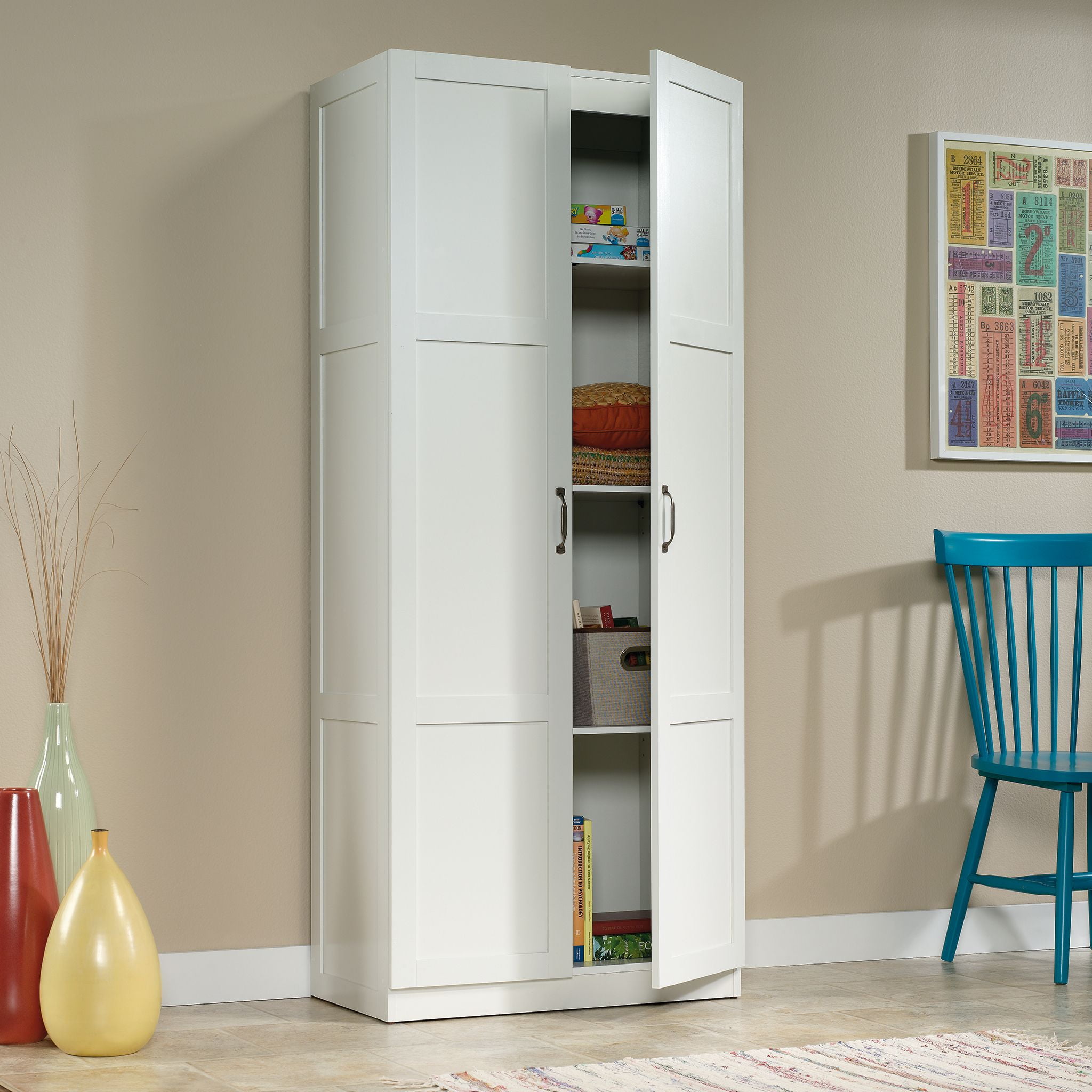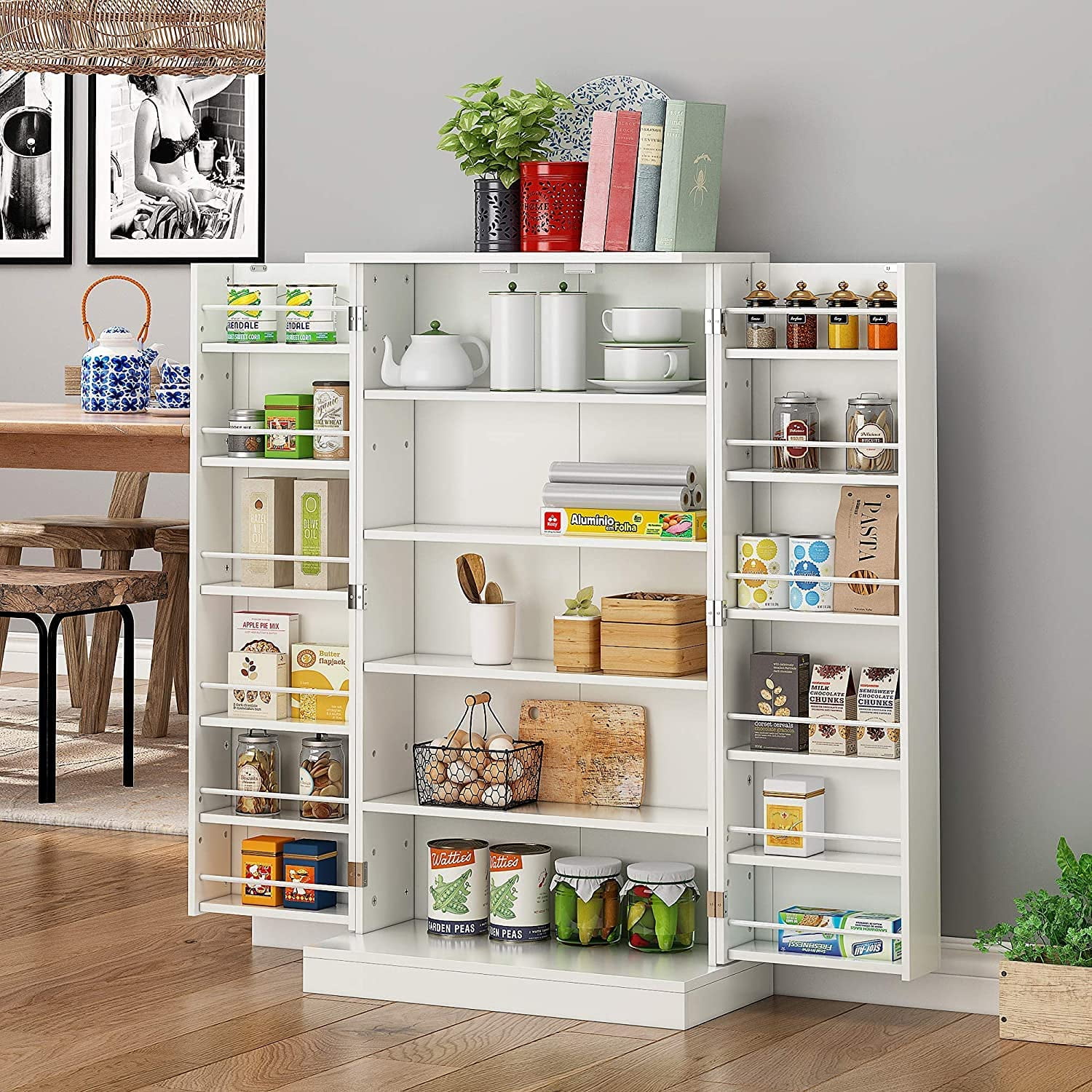Design Considerations for Two-Door Cabinets with Shelves

The design of a two-door cabinet with shelves significantly impacts its functionality and aesthetic appeal. Careful consideration of style, materials, shelf configuration, and dimensions is crucial to ensure the cabinet meets its intended purpose and complements its surrounding environment. This section details key design aspects to guide informed decision-making.
Design Styles, Materials, and Hardware for Two-Door Cabinets, Two door cabinet with shelves
The style, material, and hardware of a two-door cabinet contribute significantly to its overall look and feel. A wide variety of options exists to suit diverse preferences and interior design schemes.
| Style | Material | Hardware | Example Description |
|---|---|---|---|
| Modern | High-gloss lacquered MDF, stainless steel | Sleek, minimalist handles or recessed pulls; brushed nickel finish | A clean-lined cabinet with a flat front and integrated handles, featuring smooth surfaces and a monochromatic color palette. |
| Traditional | Solid oak, cherry, or mahogany | Ornate knobs or pulls; brass or bronze finish | A cabinet with raised panel doors, detailed molding, and decorative hardware, exhibiting a classic and timeless aesthetic. |
| Rustic | Reclaimed wood, wrought iron | Simple, functional handles; black or oil-rubbed bronze finish | A cabinet with a distressed wood finish, visible wood grain, and possibly metal accents, conveying a sense of aged charm and craftsmanship. |
| Contemporary | Laminate, melamine | Simple bar pulls, flush pulls; matte black or white finish | A cabinet with a streamlined design, emphasizing functionality and clean lines, often featuring neutral colors and understated hardware. |
Shelf Configurations for Two-Door Cabinets
The choice of shelf configuration significantly affects the cabinet’s storage capacity and organization. Three primary types exist: adjustable, fixed, and specialized shelving.
Two door cabinet with shelves – Selecting the appropriate shelf configuration depends on the intended use of the cabinet and the types of items to be stored. Consider the pros and cons of each option to make an informed decision.
- Adjustable Shelves:
- Pros: Offers flexibility to customize storage space based on item size and quantity; maximizes storage efficiency.
- Cons: Can be slightly more expensive than fixed shelves; may require more time to adjust.
- Fixed Shelves:
- Pros: Provides a sturdy and stable platform for heavier items; generally less expensive than adjustable shelves.
- Cons: Less adaptable to changing storage needs; may not optimize space for irregularly shaped items.
- Specialized Shelving: (e.g., pull-out drawers, spice racks, wine racks)
- Pros: Designed for specific storage needs, improving organization and accessibility.
- Cons: Can be more expensive; reduces overall storage space compared to standard shelving.
Cabinet Size and Dimension Selection
The appropriate size and dimensions of a two-door cabinet depend on the available space and its intended use. Careful measurement and planning are essential to ensure a proper fit and optimal functionality.
Consider the following examples to illustrate appropriate dimensions for different applications:
- Kitchen Pantry: A standard kitchen pantry cabinet might measure 36 inches wide, 24 inches deep, and 72 inches high. This provides ample space for storing canned goods, dry ingredients, and other pantry staples.
- Bathroom Linen Closet: A linen closet cabinet might be smaller, perhaps 24 inches wide, 12 inches deep, and 72 inches high, sufficient for storing towels, toiletries, and other bathroom essentials.
- Bedroom Storage: A bedroom storage cabinet could range widely in size, depending on needs, from a smaller 18-inch wide unit for jewelry to a larger 48-inch wide unit for clothing and accessories.
Functionality and Practical Applications of Two-Door Cabinets with Shelves

Two-door cabinets with shelves represent a versatile and widely-used storage solution, offering a balance between accessibility and capacity across diverse domestic and professional settings. Their functionality stems from the combination of enclosed storage, preventing dust accumulation and concealing contents, and the adjustable shelving system allowing for customized organization based on the user’s specific needs. This adaptability makes them suitable for a variety of applications and storage requirements.
Two-door cabinets with shelves are adaptable to various storage needs depending on their placement and design. Their versatility is showcased in the efficient organization of items in diverse environments.
Storage Solutions in Various Settings
The adaptable nature of two-door cabinets with shelves makes them suitable for a wide range of environments. Their effective use depends on careful consideration of the items to be stored and the available space. The following examples illustrate their practical application in different settings:
- Kitchens: These cabinets are ideal for storing pantry staples (canned goods, dry goods, snacks), cookware (pots, pans, lids), bakeware, and small appliances. The shelves can be adjusted to accommodate items of varying heights and sizes, maximizing space efficiency.
- Bathrooms: Two-door cabinets can provide storage for toiletries, cleaning supplies, towels, and medications. Adjustable shelves allow for customized organization of items based on frequency of use and size.
- Offices: These cabinets are useful for storing office supplies (paper, stationery, files), books, and electronic equipment. The enclosed nature protects items from dust and damage.
- Bedrooms: Two-door cabinets can store clothing, linens, shoes, and accessories. Shelves can be adjusted to accommodate different types of clothing and accessories, promoting organization and maximizing storage capacity.
Optimizing Storage Capacity and Accessibility
Effective organization is crucial for maximizing the storage capacity and accessibility of a two-door cabinet. Poor organization can lead to wasted space and difficulty retrieving items. Strategic placement of items, utilization of vertical space, and the use of dividers and organizers are key to efficient storage.
Proper organization within a two-door cabinet involves strategically placing frequently used items at eye level and less frequently used items on higher or lower shelves. This improves accessibility and reduces wasted time searching for items.
Utilizing vertical space effectively, including the use of stackable containers and shelf dividers, significantly increases storage capacity. This prevents items from toppling over and maximizes the use of available space.
Employing drawer organizers, bins, and baskets can group similar items together, making it easier to find what you need and maintaining a tidy appearance. Labeling these containers further enhances organization and efficiency.
Comparison with Other Storage Solutions
Two-door cabinets with shelves offer several advantages and disadvantages compared to other storage solutions. A comparative analysis allows for informed decision-making regarding storage choices.
| Storage Solution | Advantages | Disadvantages |
|---|---|---|
| Two-Door Cabinet with Shelves | Enclosed storage, dust protection, adjustable shelving, versatile, good capacity | Can be bulky, may require more floor space than other solutions, accessibility can be limited if poorly organized |
| Open Shelving | Easy access, visually appealing, customizable | Dust accumulation, items exposed, less storage capacity for the same footprint |
| Drawers | Good for smaller items, keeps contents hidden, prevents items from falling | Less visible, limited vertical space utilization, can be more expensive |
| Single-Door Cabinet | Compact, suitable for smaller spaces, good for hiding items | Limited storage capacity compared to two-door cabinets, less flexible shelving arrangement |
Manufacturing and Sourcing of Two-Door Cabinets with Shelves: Two Door Cabinet With Shelves

The creation and acquisition of two-door cabinets with shelves involve a multifaceted process encompassing material selection, manufacturing techniques, and diverse sourcing options. Understanding these aspects is crucial for both consumers seeking to purchase cabinets and manufacturers aiming to optimize their production processes.
Cabinet Manufacturing Processes
The production of a two-door cabinet with shelves involves several key stages. Careful consideration of each step ensures the final product’s durability, aesthetics, and functionality.
- Material Selection: The choice of materials significantly impacts the cabinet’s cost, durability, and aesthetic appeal. Common materials include various types of wood (e.g., solid hardwood, plywood, medium-density fiberboard (MDF)), particleboard, and metal. The selection depends on factors such as budget, desired style, and intended use. For instance, solid hardwood offers superior durability and aesthetics but commands a higher price, while MDF provides a cost-effective alternative suitable for painted finishes.
- Cutting and Shaping: Precise cutting and shaping of the cabinet components (sides, top, bottom, doors, shelves) are essential. This typically involves computer-numerical control (CNC) machinery for accurate and efficient production. The process ensures all pieces fit together seamlessly.
- Assembly: Components are joined using various methods such as dowels, screws, and wood glue. Advanced techniques might involve the use of specialized joinery, such as mortise and tenon joints, for enhanced strength and durability. The assembly process requires precision to ensure structural integrity.
- Shelf Installation: Shelves are typically installed using shelf supports, brackets, or dadoes (grooves cut into the cabinet sides). The number and placement of shelves are determined by design specifications and intended use.
- Door Installation: Doors are hung using hinges, ensuring smooth and reliable operation. Different hinge types offer varying levels of adjustability and aesthetic appeal. Proper door alignment is critical for a finished look.
- Finishing: Finishing techniques vary depending on the chosen material and desired aesthetic. Options include painting, staining, varnishing, or lacquering. These processes protect the cabinet from damage and enhance its appearance. Proper surface preparation is essential for a high-quality finish.
Sourcing Two-Door Cabinets with Shelves
Consumers have several avenues for acquiring two-door cabinets with shelves, each offering distinct advantages and disadvantages in terms of price and quality.
| Source | Price Range | Quality | Pros/Cons |
|---|---|---|---|
| Online Retailers (e.g., Amazon, Wayfair) | Wide range, generally lower to mid-range | Variable; depends heavily on manufacturer and materials | Pros: Wide selection, convenience, competitive pricing. Cons: Shipping costs, potential for damage during shipping, difficulty assessing quality before purchase. |
| Home Improvement Stores (e.g., Home Depot, Lowe’s) | Mid-range to higher-range | Generally good for readily available stock cabinets; quality varies by brand | Pros: In-store viewing, readily available stock, potential for in-store assistance. Cons: Limited selection compared to online retailers, higher prices than some online options. |
| Custom Cabinet Makers | High-range | Highest quality, tailored to specific needs and preferences | Pros: Completely customized design and materials, superior quality and craftsmanship. Cons: High cost, longer lead times. |
